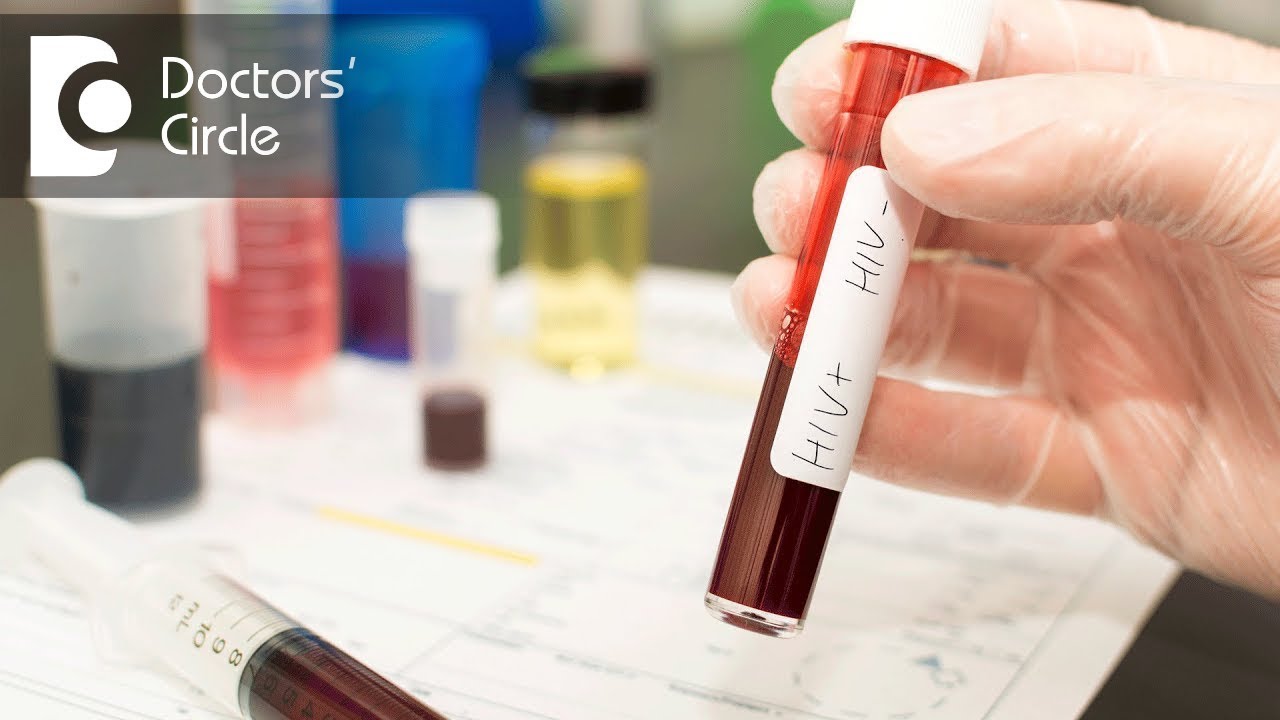Which tests should one plan to rule out HIV exposure? – Dr. Ramakrishna Prasad
First of all it is important to know when the exposure happened and what type of exposure as I would advise the following, Get a baseline, as soon as you learn of this exposure, or as soon as you become aware of the exposure, I would get an HIV ELSA test. This is a baseline. If this is negative, it would tell you that at the time of exposure, you were not already infected with HIV. Then the subsequent testing depends on the window period and the sensitivity of the test utilized. There are three types of tests you can do. First group of tests are called as molecular test. This is the HIV RNA PCR or DNA PCR. The HIV RNA PCR it becomes positive after about 7 to 120 days after exposure. So before that it could give you a false negative result. But generally after about 14 days if the HIV RNA PCR test is negative, one can fairly sure that the infection has not occurred. The second type of test which will be done is the HIV antigen antibody combined test or the combined test or the 4th generation test. This test, the window period associated with this is about 3 weeks. If someone ‘s antigen antibody 4th generation test is negative, after period of about 3 to 4 weeks following exposure, generally it indicates negative infection the third type of test is the ELSIA test. Usually the window period associated with the newer ELSIA test is about 3 to 4 weeks. So if one’s ELSIA test is negative after exposure or 6 weeks after exposure, one can be fairly confident in thinking that HIV infection has not occurred. Nonetheless, please consult with an HIV doctor or a physician who is knowlegible to guide you through this process because this is a very stressful process.



![[ID: Hx_A0iLhdr8] Youtube Automatic](https://bizimtube.com/wp-content/uploads/2021/03/id-hxa0ilhdr8-youtube-automatic-236x133.jpg)
![[ID: lp7w0UmpuIs] Youtube Automatic](https://bizimtube.com/wp-content/uploads/2021/03/id-lp7w0umpuis-youtube-automatic-236x133.jpg)
![[ID: s2-7T1TH-lY] Youtube Automatic](https://bizimtube.com/wp-content/uploads/2021/03/id-s2-7t1th-ly-youtube-automatic-236x133.jpg)
![[ID: b_lakC9M4UQ] Youtube Automatic](https://bizimtube.com/wp-content/uploads/2021/03/id-blakc9m4uq-youtube-automatic-236x133.jpg)
![[ID: r44yl6nPONs] Youtube Automatic](https://bizimtube.com/wp-content/uploads/2021/03/id-r44yl6npons-youtube-automatic-236x133.jpg)
![[ID: pAwto1YQjA8] Youtube Automatic](https://bizimtube.com/wp-content/uploads/2021/03/id-pawto1yqja8-youtube-automatic-236x133.jpg)
![[ID: XETG8azHiv4] Youtube Automatic](https://bizimtube.com/wp-content/uploads/2021/03/id-xetg8azhiv4-youtube-automatic-236x133.jpg)
![[ID: f3G_-S_2HUk] Youtube Automatic](https://bizimtube.com/wp-content/uploads/2021/03/id-f3g-s2huk-youtube-automatic-236x133.jpg)
![[ID: G8oWns54snA] Youtube Automatic](https://bizimtube.com/wp-content/uploads/2021/03/id-g8owns54sna-youtube-automatic-236x133.jpg)
![[ID: s0lIFXhu6aw] Youtube Automatic](https://bizimtube.com/wp-content/uploads/2021/03/id-s0lifxhu6aw-youtube-automatic-236x133.jpg)
![[ID: 4UTd2Ev8eYg] Youtube Automatic](https://bizimtube.com/wp-content/uploads/2021/03/id-4utd2ev8eyg-youtube-automatic-236x133.jpg)
![[ID: RKBGBjVJBxQ] Youtube Automatic](https://bizimtube.com/wp-content/uploads/2021/03/id-rkbgbjvjbxq-youtube-automatic-236x133.jpg)